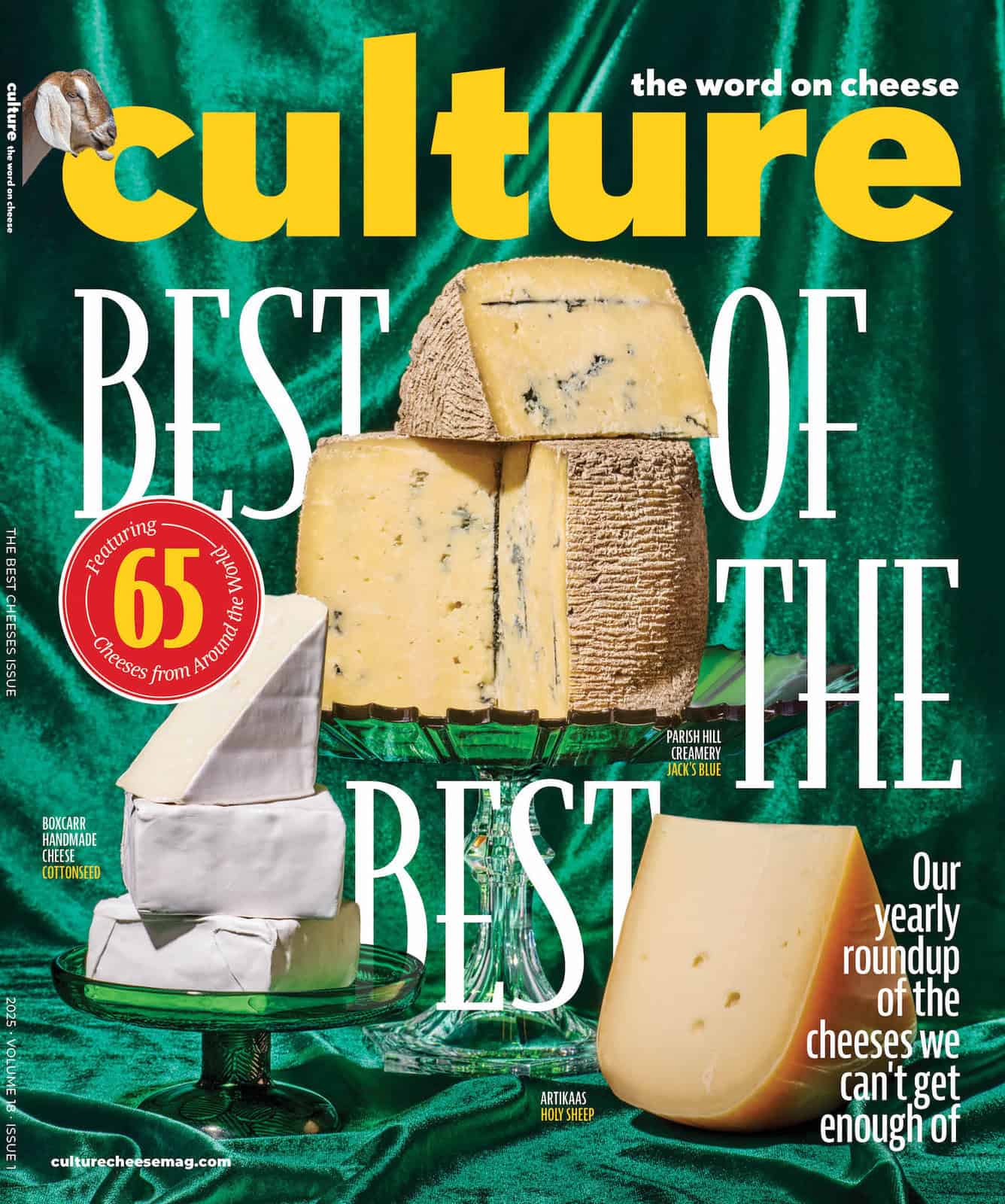
In this blog series, intern Rachel E. McLean explores her passion for cheddar. Read along as she discovers the history of cheddar, what makes it taste sharp, and more.
The steps of cheesemaking are generally the same for all cheese: add rennet and culture to milk, cut the curd, drain the whey, and age the cheese. The way in which you carry out those steps and the type of ingredients you use impacts the flavor and type of cheese you make. Cheddar, however, is different from all other cheeses because it has additional steps to turn it into the buttery block we know and love.
Making cheddar starts off similar to making any other cheese. Cheddar producers add culture and rennet to fresh milk and allow the milk to set. At this stage, some makers will add natural dye, most often annatto, to their mixture. This is sometimes done to identify the geographical origin of the cheddar, as some regions, such as Wisconsin, are known for orange cheese while others, such as Vermont, are known for naturally white cheddars. Historically, dye was added to the milk to disguise the quality of the cheese, as natural cheddar coloring can reveal both what season the milk was obtained and the fat content of the milk used.
Coloring aside, the next step in the cheese making process is really what makes cheddar stand out among the rest. After the milk, culture, and rennet mixture is allowed to set, and the curd is drained off, cheesemakers begin the process of cheddaring. Cheddaring is a multistep process that gives cheddar cheese its distinct texture and flavor.
The first step of cheddaring is adding water to the curds after the whey has drained off, and then heating and stirring the submerged curds. Next, the water is drained off and the curds are pushed together to eliminate any excess water and whey. After being allowed to sit, the curd is cut into loaves that are stacked on top of one another to drain out even more liquid. The stacks are flipped as they cool and thicken. The cheddaring process is completed by cutting the stacks back up into smaller curds, which are then put into a mold and allowed to age.
So, it’s true, there is no other cheese like cheddar. Its careful creation makes for unique flavor that is unlike any other type of cheese. Want to give making your own curds a go? You can make your own cheddar curds to snack on by following the steps and skipping the aging process.



